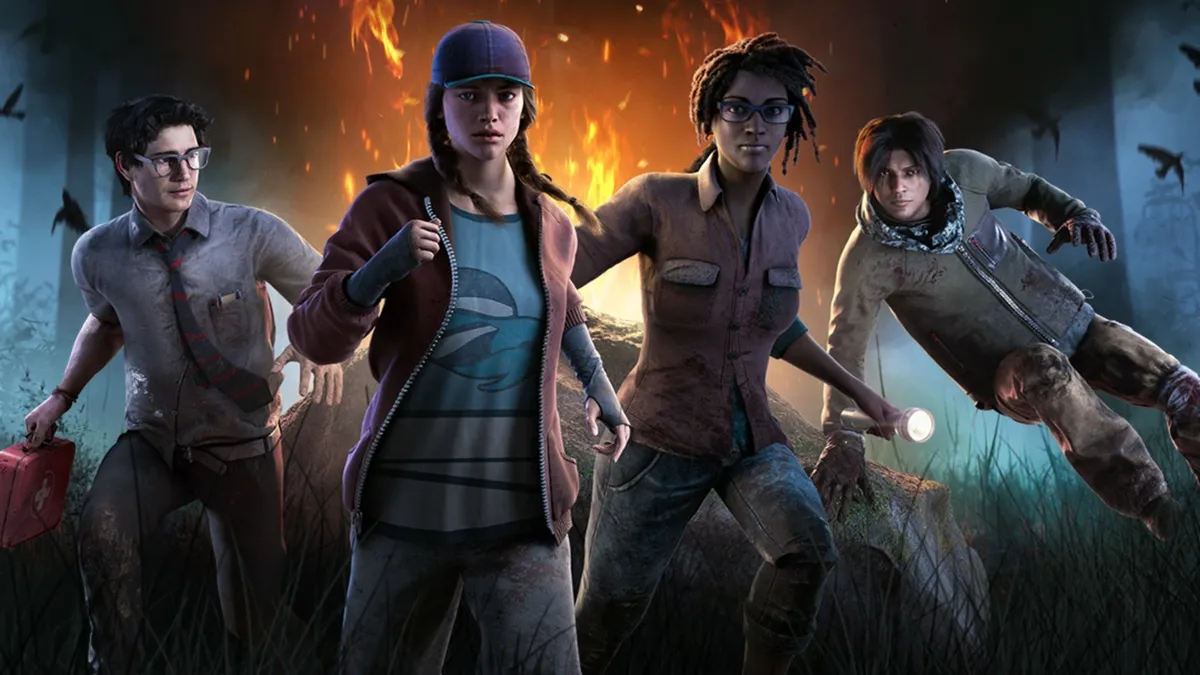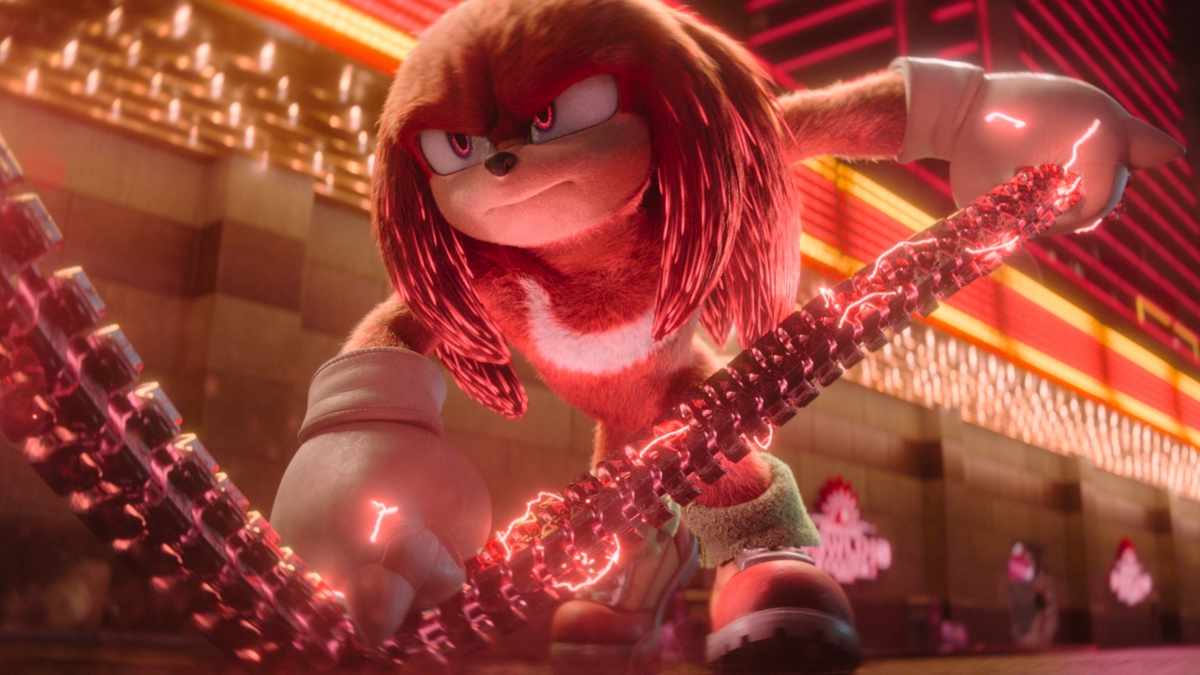Along with music games and MMOs, the most important new genre to come out of the current generation of gaming has been the MOBA, an arch little acronym that describes one of the densest, and most competitive gaming experiences players can get. Unlike those other two genres, which either died within a few years, or have stalled awaiting reinvention, the star of Multiplayer Online Battle Arenas continues to rise. Its most popular incarnation, League of Legends, has become an outright phenomenon, supplanting Blizzard’s control on both the biggest thing in e-sports, and also the most played PC game in the world. With Valve soon releasing their update of the game that started it all, DOTA, MOBA market saturation seems just around the corner, at least, for PCs. Consoles, on the other hand, have been slow to adopt the new craze, which is why the first major Xbox and PlayStation release for the genre, the downloadable Guardians of Middle-Earth, comes with some major expectations.
It’s a daunting task Monolith Productions have set themselves to, as the genetics of MOBAs are still deeply tied to another famously controller-averse breed, strategy games. While the likes of Starcraft require a mouse to handle a million little tasks at once, MOBAs boil down the focus to a single player character. This might sound simplifying, but it just creates even more pressure to handle the part of the match you control with absolute precision, something Guardians of Middle-Earth has to attempt with two sticks and a dozen buttons. Teams of five, each controlling a unique and powerful “Guardian” pulled from Tolkien’s Lord of the Rings mythology, clash over a symmetrical battlefield, with the goal of eliminating the other side’s characters so that one’s team can get to the heart of the enemy’s base, the nexus. Destroy that, and you win the game.
That’s easier said then done though, as MOBAs are less like a mad dash game of capture the flag, and more a strategic game of tug of war, where understanding the flow of the battlefield is as important as being the strongest team. Equally tough waves of minions spawn for each faction at set intervals, marching fearlessly at enemy units, and soaking up damage that might otherwise be directed at a player. Once one side gains an advantage, their forces usually wind up crashing up against towers, extremely powerful structures that act as checkpoints to the opposing nexus, and require teamwork to bring down. Three of these “lanes” exist on a standard MOBA map, with shortcuts into each separated by a vast no man’s land, one full of neutral, but fierce monsters that can be slain for bonuses. By executing a successful surprise attack, or defeating an enemy player mano-a-mano, you gain experience points that level your character, making them more effective, and giving your team an advantage while the enemy waits to respawn back at their base.
Each Guardian has a set of three abilities, as well as a powerful ultimate, that define what role they play in the team. Matches often come down to who has the better team composition, and how well you balance upfront brawlers, ranged damage dealers, and life-saving supports will determine the course of battle. Each Guardian belongs to a discreet class (a proper team usually having one of each type), but the individual characters have unique strengths and weaknesses. Gandalf, for instance, can reveal invisible foes, root targets in place for a few seconds, or lay down a huge amount of hurt on enemies caught in a circle of fireworks, but might as well sit back and smoke his pipe while his abilities are on cooldown. My Guardian of choice was Bilbo, as his stealth skills let him sneak around the battlefield undetected, picking off unsuspecting squishy casters, and injured members of the enemy team at will. Of course, being a hobbit, he’s more adept at dishing out damage than taking any himself, so knowing when to retreat out of a drawn-out engagement becomes an important sixth sense.
This is all part of the basic MOBA design that has defined the genre since its inception, and what’s layered on top is usually what separates one example from another. Guardians of Middle-Earth takes an, “and the kitchen sink” approach, adding in a number of mechanics that are intimidating in quantity, but not depth. Regenerating healing items appear on the map to provide a quick reprieve, and a number of “shrines” littered throughout the arena give bonuses to the team that controls them. There’s also the option to upgrade your towers, and minion spawning structures, giving your team different offensive, and defensive capabilities, depending on what the situation calls for. GoME also offers a 1-lane map variant that’s even more chaotic than usual, funnelling ten players into a hot mess of dropping health bars and flashy particle effects. Each mechanic and mode is simple, both in function and usability, but the volume of them adds to the overwhelming sensation all MOBAs tend to inspire, even for veterans.
Featuring 26 Guardians to choose from (four of which are DLC, with four more to come), getting a grip on the mechanics of the match often feels secondary to understanding how your character plays, which gets more difficult when there are nine other players on the map either helping or harming you. Thankfully, bot matches are readily available, and give you a low-stakes environment to acclimatize to the tempo of characters and combat. The A.I. ranges from decently competent, to frightened rabbit levels of aggression, but they provide stress-free adversaries to hone your skills against. Player versus player matches are where things really come alive though, as the pleasure of running up the score against bots can’t compare to the thrill of a well-executed trap, or a stunning comeback against real opponents. The game smartly offers two versions of PvP: “Battlegrounds,” which have a 20-minute time limit for players to score points by killing foes and wrecking towers, and “Elite Battlegrounds,” which always go the full nexus-to-nexus distance (usually upwards of 30 minutes).
The latter is clearly where Monolith thinks Guardians of Middle-Earth has e-sports potential, but the game simply doesn’t possess the tightness of control PC MOBAs have. Players attack in wide, sweeping motions, and using the joysticks to aim abilities can be imprecise. The camera can also cause confusion, as the angle causes Guardians to clump up when in the middle of a scrap, and the showiness of the abilities only clouds vision further. However, the biggest issue facing the game’s acceptance at the pro level is the Relic system. Another key feature of MOBAs is the ability to buy items that modify your character in game, using currency acquired by killing minion, slaying players, or gaining objectives. It adds another layer to an already complicated experience, and GoME has a good solution. Players come into battle with a pre-determined set of bonuses and boosts that unlock as they level, letting you customize your favorite hero to your preferred play style, or use a preset (but inferior) Relic collection that comes for free with each Guardian.
While it’s wise not to force newbies to scroll through screen after screen of items in the middle of a match, the problem comes with how Relics put greater emphasis on planning things out from the very beginning. Because everyone caps out at level 14, a long enough match will theoretically put everyone back on equal footing. It encourages dramatic late-game reversals, but makes matches less dynamic, as instead of being able to tailor your items to what the current situation requires, the fate of the battle will often hang on whether you picked the right Relics and Guardian in the pre-game lobby. While the game’s pro level appeal is limited compared to its contemporaries, the looseness does make the game less stressful, and a lot of fun. When you’ve got a group together, and are strategically shouting things like “Eowyn is tower diving,” and, “don’t feed Gollum,” Guardians of Middle-Earth is an absolute blast.
Unfortunately, the game doesn’t elicit that pleasure nearly enough, because, as of this writing, the online experience is severely compromised. Of all the matches I played, perhaps 30% went smoothly. The other 70% were plagued with frequent player disconnects, and heavy bouts of lag, causing characters to walk in place as if the entire Shire suddenly turned into an ice rink. Because of this, Monolith has had to disable temporary bans for players who leave matches early, meaning there’s nothing to stop your team’s Legolas from rage quitting after Nori gives up first blood. The queues to get into games are similarly frustrating, taking upwards of five minutes to find a match, and sometimes dumping you into a lobby that only allows a few seconds to pick a Guardian. Thanks to the split platforms being catered to, and the time it takes for patch certification, fixes will likely take longer than would be expected for a PC-based MOBAs.
And when you start looking at the PC, the appeal is hard to ignore. Many other MOBAs have no purchase or subscription fees, instead letting players pay real cash to quickly unlock characters and costumes. At a $15 asking price, with $2 more for every DLC character you’d like to buy (alternately condensed into a $15 season pass), Guardians of Middle-Earth represents a far less frugal means for new players to try dipping their toes into a genre with an infamously high learning curve. When coupled with the persistent connectivity issues, the package can be downright disappointing. Once the servers have stabilized, and punishment for toxic players is implemented, it will be far easier to recommend, but by that time, it’s hard to tell how strong the community will be. The game going free on Playstation Plus next month should help pad out the player count, though there’s no cross-platform support. Of the two options, GoME looks cleaner on 360, though the game nicely captures the look of Peter Jackson’s Lord of the Rings trilogy regardless of platform.
The real shame is that everything surrounding Guardians of Middle-Earth’s core gameplay is really well done. The characters are pulled deep from Tolkien lore, and mix familiar faces with those you might see in the conveniently timed new Hobbit film. The stat tracking and menu interface are great, as you can spend your long queue times pouring over your performance with individual Guardians, or your records in each different game type (an online match history is available, but requires a Warner Bros. ID). The achievements, and Call of Duty-style accolades and profile level, give you little rewards to go along with the metagame currency you earn after each match, that can be put towards unlocking (non-DLC) Guardians, purchasing relics, or buying one-time use potions that give you an edge in battle.
If you refuse to play on PC, then Guardians of Middle-Earth is about the only game in town if you’re interested in trying a MOBA, and it can be a pretty good one. But the simplifications in gameplay, while inviting, make for a less substantive experience, and many neophytes might simply use GoME as a stepping-stone to more complex, and less-expensive games. Once the technical issues are solved, and Monolith proves how fiercely they’re willing to support the game for the long haul, it’ll make for an easier sell. Until then though, the cheaper, more reliable MOBAs of the world will have a distinct edge over the inconsistently enjoyable adventures offered by Guardians of Middle Earth.
This review is based on the PSN version of the game, which we were provided with.










